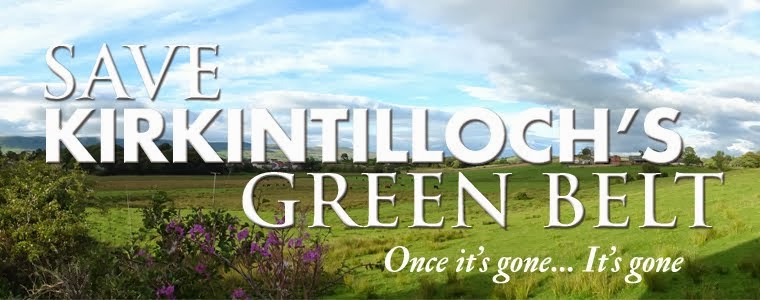Property developers Barrat Homes are currently hosting public consultation events to gauge the view of the local residents who will be affected by the destruction of the green belt land around their homes.
In United Kingdom town planning, the green belt is a policy for controlling urban growth. The idea is for a ring of countryside where urbanisation will be resisted for the foreseeable future, maintaining an area where agriculture, forestry and outdoor leisure can be expected to prevail. The fundamental aim of green belt policy is to prevent urban sprawl by keeping land permanently open, and consequently the most important attribute of green belts is their openness.
Green belt policy in Scotland is set out in Scottish Planning Policy (SPP) 21, published by the Scottish Government in February 2010. On 29 November, the Government published "Green Belt Policy in Scotland 10/85"
As of 2010 Scotland had 10 green belt areas: Aberdeen, Ayr, Clackmannanshire, East Lothian, Edinburgh, Falkirk and Grangemouth, Greater Glasgow, Midlothian and Stirling. There are also plans for green belts around Dunfermline, Perth and St Andrews.
The Scottish Government is clear that:
- The purpose of green belt designation in the development plan as part of the settlement strategy for an area is to: direct planned growth to the most appropriate locations and support regeneration, protect and enhance the quality, character, landscape setting and identity of towns and cities, and protect and give access to open space within and around towns and cities
However, the Scottish Government recognises that certain types of development might actually promote and support appropriate rural diversification:
- Development associated with agriculture, including the re-use of historic agricultural buildings,
- Woodland and forestry, including community woodlands,
- Horticulture, including market gardening and directly connected retailing,
- Recreational uses that are compatible with an agricultural or natural setting, and essential infrastructure such as electronic communications infrastructure and electricity grid connections
The Government requires that locally established green belt plans: maintain the identity of a city by the clearly establishing physical boundaries and preventing coalescence; provide countryside for recreation of denizens; and maintain the landscape setting of the city in question. In its Planning Policy (129), the Scottish Government states that
- “All public bodies, including planning authorities, have a duty to further the conservation of biodiversity under the Nature Conservation (Scotland) Act 2004, and this should be reflected in development plans and development management decisions. Biodiversity is important because it provides natural services and products that we rely on, is an important element of sustainable development and makes an essential contribution to Scotland's economy and cultural heritage.”
Please sign the petition here






